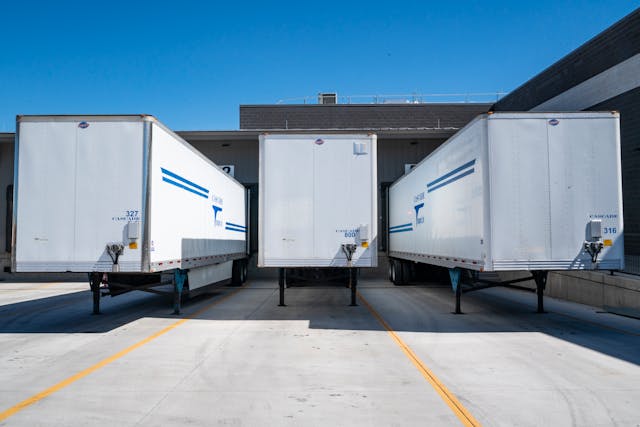Why Your Fleet Might Be Costing Your Business Too Much Money
One of the most important skills for any entrepreneur or business owner to learn is the discipline of money management.
How you manage your money is largely going to depend on how you make your money, as well as what you’re spending on.
If your business runs a fleet of vehicles, be it for deliveries, internal logistics, or otherwise, then that’s likely going to be one of your biggest expenses.
Here, we’re going to look at some of the biggest costs you can expect from your fleet, and what you can do about them.

Fuel Wastage
Fuel is one of the most significant expenses for fleet-based businesses, and excessive fuel usage can quickly erode profits. One of the primary contributors to fuel wastage is inefficient driving behaviors such as speeding, idling, and aggressive acceleration.
Many drivers, especially those without proper monitoring or guidance, may not be aware of how their driving habits directly impact fuel consumption. Moreover, the failure to regularly maintain vehicles can lead to suboptimal engine performance and tire wear, further increasing fuel usage.
To combat fuel wastage, fleet businesses should invest in telematics systems that monitor driving behavior in real-time. By tracking metrics such as speed, idling time, and fuel efficiency, fleet managers can provide feedback and implement training programs to promote more fuel-efficient driving.
Regular vehicle maintenance, such as ensuring tire pressure is at optimal levels and engine components are functioning correctly, is also crucial in reducing fuel costs. Additionally, route planning software can help minimize unnecessary mileage, further cutting fuel consumption.
Small steps like setting limits on idling time and encouraging eco-friendly driving habits can result in substantial long-term savings.
Inefficient Routing
Inefficient routing is another key area where fleet-based businesses lose money. When vehicles take unnecessarily long or indirect routes, it leads to wasted fuel, increased wear and tear on vehicles, and lost time.
This inefficiency can occur due to poor planning, a lack of real-time data on road conditions, or failure to adjust for unforeseen events like traffic congestion, road closures, or weather conditions.
Implementing an advanced fleet management system can significantly reduce inefficiencies in routing. GPS-enabled route optimization tools use real-time data to track drivers and plan the most efficient routes, taking into account variables such as traffic patterns, roadwork, and weather conditions.
These systems can also suggest alternative routes if conditions change during transit, helping drivers avoid delays.
Accidents and Collisions
Accidents and collisions represent a major financial risk for fleet-based businesses. Costs associated with accidents extend beyond vehicle damage to include medical expenses, legal liabilities, increased insurance premiums, and potential downtime for vehicles and drivers.
Often, these accidents occur due to driver fatigue, distraction, or aggressive driving behaviors, all of which are preventable with proper monitoring and training.
To mitigate the risk of accidents, companies should invest in driver safety programs and technologies such as dashcams, driver fatigue monitoring systems, and collision avoidance systems. Driver behavior monitoring, made possible through telematics, can identify high-risk behaviors such as hard braking, sharp turns, and speeding.
By identifying these issues early and providing drivers with the necessary training, fleet managers can significantly reduce accident rates.
Vehicle Repairs
Vehicle maintenance and repair costs are inevitable in any fleet-based operation, but they can spiral out of control when proactive maintenance measures are not in place.
When vehicles break down unexpectedly, it can lead to costly emergency repairs, downtime, and delays in service, all of which negatively impact profitability. Poorly maintained vehicles also tend to consume more fuel and are more prone to mechanical failures, further driving up costs.
A preventative maintenance strategy is essential to keep repair costs under control. Fleet management systems that track the mileage, performance, and maintenance history of each vehicle can alert fleet managers when routine maintenance, such as oil changes or brake checks, is due.
Inventory Damage
Another often-overlooked source of financial loss in fleet-based businesses is inventory damage during transit. This can occur due to improper handling, unsecured loads, or excessive vibrations and shocks during the journey.
Damaged goods lead to dissatisfied customers, returns, and additional replacement costs, all of which can eat into profits.
To prevent inventory damage, businesses should ensure that vehicles are equipped with proper securing equipment such as straps, padding, or shock absorbers to minimize movement during transit.
Drivers should also be trained in best practices for loading and unloading cargo, as well as how to handle the vehicle in ways that minimize jarring movements or hard braking.
A fleet is a costly thing to manage. As such, you should be looking for every opportunity to make it as efficient as possible, raising your chance of getting some return on investment for your efforts.






